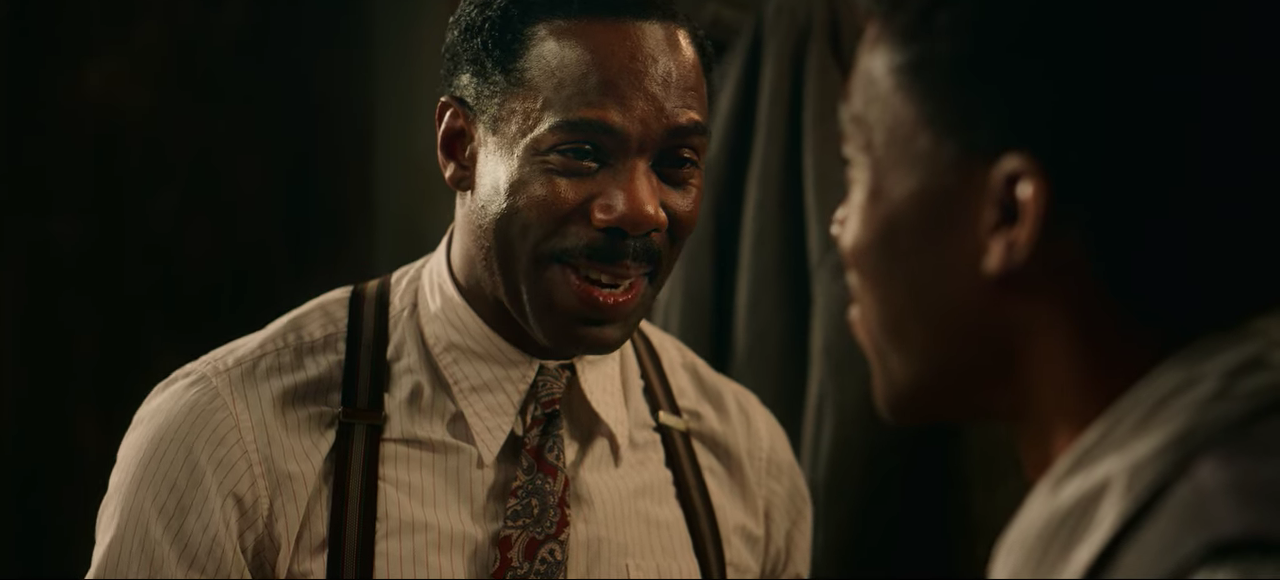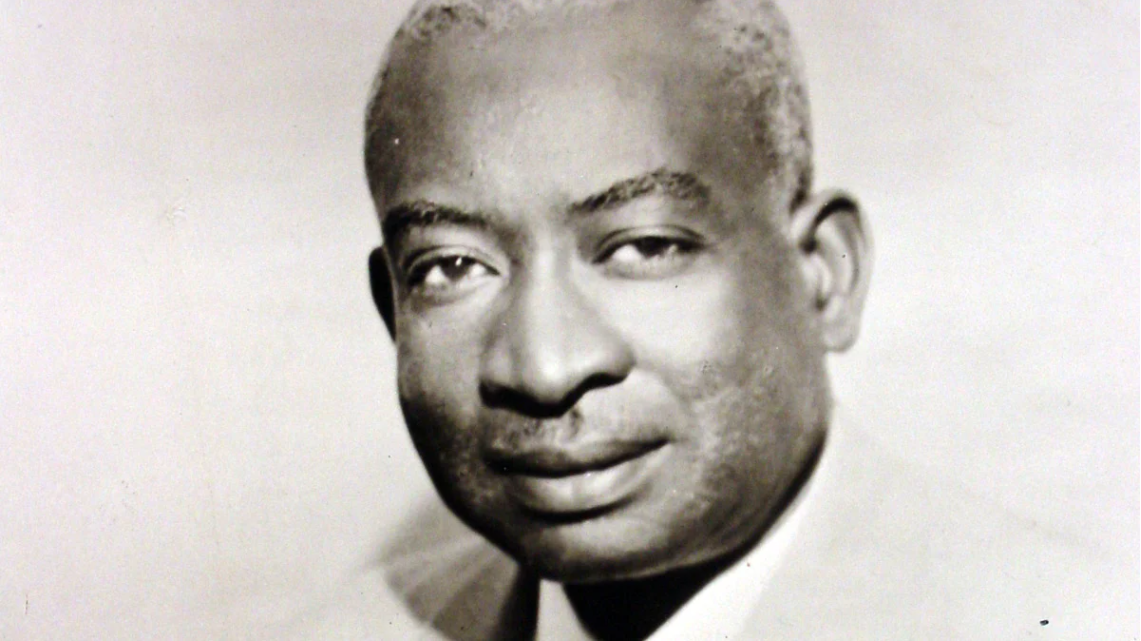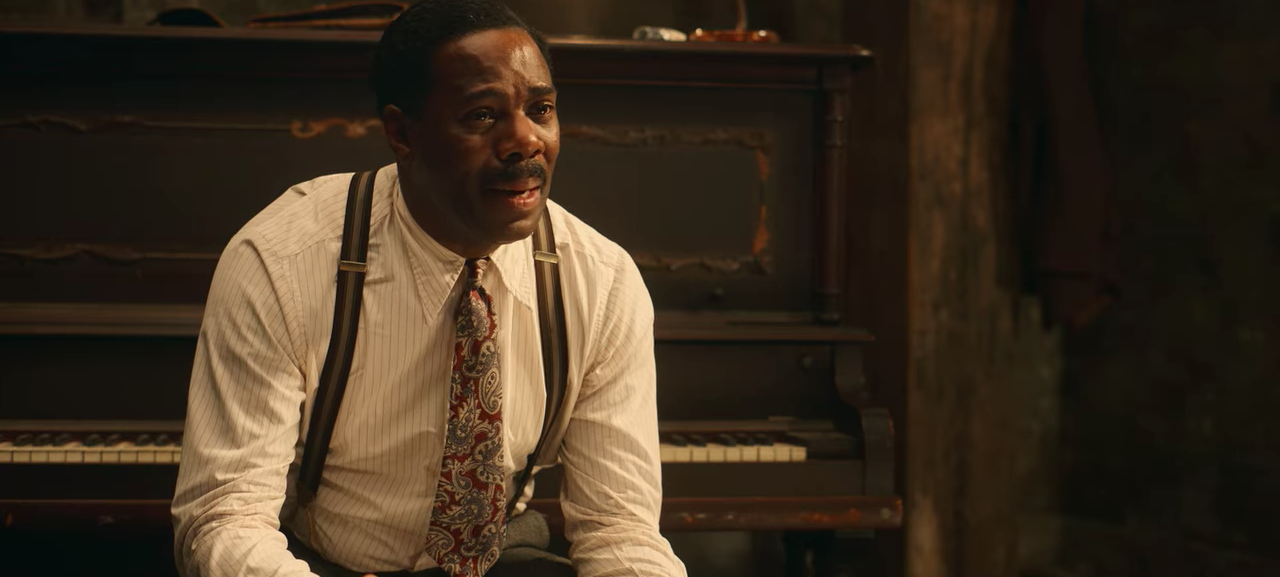Various films in cinematic history have looked at the plight of African Americans throughout the decades. But ‘Ma Rainey’s Black Bottom’ threads the needle in just one single afternoon in 1927. The legendary “Mother of the Blues” has a recording session in a studio in Chicago. However, she shows up late, and her band passes the time by rehearsing and bantering. This eventually leads to many conflicts between the characters.
It is clear that Ma trusts Cutler (Colman Domingo), who is seen on the trombone, the most out of everyone. He, too, understands her professional style well. Thus, we couldn’t help but wonder if the bandmate was based on a real person. We scoured the internet so that you don’t have to, and here’s what we found.
Was Cutler a Real Person? Who Is He Based on?
No, Cutler was not a real person. In the film, he is the bandleader and is also the one that Ma depends on the most. He has an authoritative feel to him, especially since he makes the cavalier Levee rehearse even when the trumpeter doesn’t want to. Furthermore, Cutler knows that despite what Irvin (the manager) and Sturdyvant (the producer) say, Ma is the one who is in charge.

In one scene, Levee reiterates that they are going to record his version of “Black Bottom.” However, Cutler anticipates what the singer will do. So, he tells the trumpeter that despite the instructions from the white men, they will still record Ma’s rendition in the end. The two bandmates even talk to Irvin about this, who takes Levee’s side. But when Cutler asks the manager about another song, it is decided that they will clear it up with Ma.
It is obvious that Cutler enjoys pulling Levee’s leg, but at the end of the day, the bandleader doesn’t really hold the ambitious trumpeter in high regard. There is even an entire altercation in which Levee attacks Cutler with a knife in an attempt to prove that there is no God. But the bandleader is deeply religious and does not stand for this.
Based on our research, it is evident that Cutler was conjured up by the playwright who wrote the eponymous play that the movie is based on. August Wilson certainly put forth the many plights of African Americans in his work, and Cutler is one character who stands out for his sheer wisdom and composure. However, we hypothesize that Thomas A. Dorsey (who was the man behind the Wildcats Jazz Band that toured with Ma) could have served as inspiration for Cutler. There are quite a few similarities between the character and the actual musician as well.

Thomas A. Dorsey toured with Ma fervently, and later, in 1924, he compiled the band. They would perform together for the next few years. Although he left the group in 1926 because of health issues, it is clear that he was instrumental to Ma’s career in a big way. After all, he was the bandleader and would also arrange much of her music. In this capacity, Cutler is quite similar to him.
Apart from this, Thomas was extremely spiritual and out of the thousands of songs he wrote, one third belonged to the gospel genre. Some of his more popular numbers include “Take My Hand, Precious Lord” and “Peace in the Valley.” Interestingly, he suffered from a bout of depression and even contemplated suicide. But in 1928, he was cured. The musician claimed that the minister who prayed over him pulled out a live snake from his throat. Following this, Dorsey transitioned to writing gospel music.
While the anecdote is certainly bizarre, there is no denying that Thomas was a master of his craft. For this reason, he is also called the “Father of Gospel Music.” Since we only see Cutler for one afternoon in 1927, there is much we don’t know about the character. However, given his professional relationship with Ma and his belief in the divine, it seems likely that the character could have been (partly) based on Thomas A. Dorsey.
Read More: Was Levee A Real Person? Who Is He Based on?


You must be logged in to post a comment.